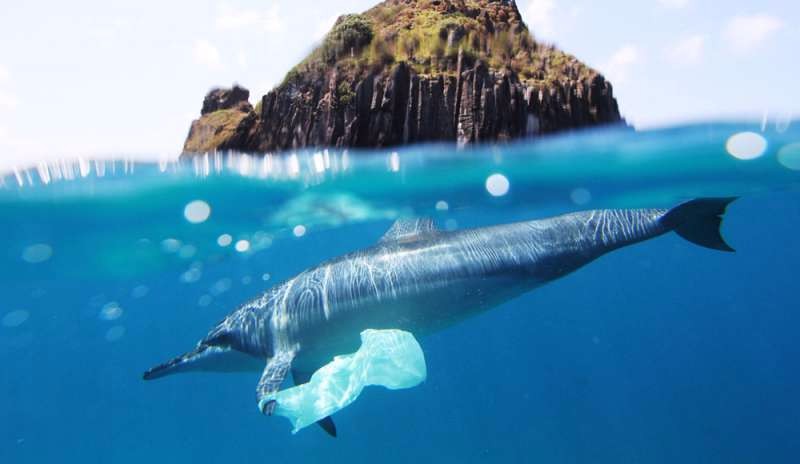Influence of plastics on marine life
To date, marine litter, especially plastic, represents one of the main threats for around 180 Mediterranean marine species, including turtles, mammals and seabirds, filter feeders, invertebrates and fish. The impacts at the population level are still being studied but an increase of 50% has been calculated in the number of species that have suffered damage from marine litter from 1997 to 2016. Plastic waste in particular is responsible for the 88 % of events recorded. The Caretta caretta turtle, together with the fin whale and sea birds (in particular the procellariforms, among which the greater Shearwater is found) are among the most threatened species. As for the cetaceans, the Common Whale is classified as endangered by the red lists of the IUCN and appears to be decreasing compared to the last 20 years. The Common Whale, feeding by filtration, ingests up to 7000 liters of water with each bite, swallowing large quantities of macro and microplastics together with the krill.
The impacts of plastic waste on marine fauna are numerous, also due to the different shapes and sizes of the waste. The main impacts concern the entanglement and entrapment of specimens.
Entanglement can lead to injuries, mutilation and strangulation, compromise swimming, escape from predators, the ability to feed or cause drowning.
Ingestion raises further concern because it can lead to malnutrition, death by suffocation, obstruction of the intestinal tract, starvation and, again, problems with the endocrine system due to exposure to the toxic substances contained or adsorbed by plastic (phthalates, PCBs and other substances). The smaller particles can then enter the food chain. Ingestion can be accidental, as for filter feeding organisms, or voluntary as some waste, such as bags or small plastic granules, can be mistaken for jellyfish or fish eggs.
Plastic waste also provides a substrate for organisms or eggs, which can be transported to new environments outside their natural boundaries, thus promoting the spread of alien species, a phenomenon that poses an additional threat to biodiversity and integrity. of ecosystems.
Recent studies, conducted in the Pelagos Sanctuary, have shown how the areas of accumulation of microplastics coincide with those in which the plankton which the Mysticetes feed on is concentrated. This is how microplastics can enter the food chain of these large filterers and expose them to microorganisms (bacteria, algae, viruses, microscopic invertebrates) that colonize the plastic waste in the sea, the so-called "Plastisphere", a new marine ecosystem composed of potentially pathogens that endanger the health of cetaceans in the waters of the Sanctuary and the biodiversity of the planet.
